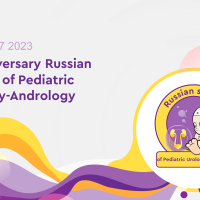
Two-stage laparoscopic fowler-stephens procedure for children
Article authors










Saratov State Medical University named after V.I. Razumovsky, Saratov
Introduction
The frequency of testes abdominal retention in children is 10 to 20 %. Failures in two-stage procedure for bringing down the testes are associated with acute ischemic disorders during the post-operative period, which lead to testicular atrophy in 30-70% of the cases. Fertility impairment in patients with bilateral cryptorchidism is diagnosed in 80% of the cases, in patients with unilateral cryptorchidism – in 66% of the cases. At that, the effectiveness of laparoscopic Fowler-Stephens procedure reaches 85%. To use it we discuss procedure indications, timing of the procedure stages, vascular bundle ligation level, frequency of postoperative complications.
Purpose of the study
To evaluate the effectiveness of the two-stage laparoscopic Fowler-Stephens procedure in treating children with abdominal retention of the testes.
Materials and Methods
Analysis method: retrospective. The analysis period is from January 2003 until January 2019. The number of patients with abdominal retention is 20. 7 patients had bilateral retention (5 patients had bilateral abdominal retention, 4 patients had abdominal retention on the left and inguinal retention on the right). 12 patients had unilateral cryptorchidism, (six patients had it on the left). 36 Fowler-Stephens procedures were performed: 15 children underwent both stages, 5 children underwent only the first stage of the procedure. In the course of the first stage, the testicular vessels were intersected after bipolar coagulation at a distance of 2-3 cm from the testes. In cases of bilateral abdominal retention, the first stage was performed simultaneously from both sides.
Results and Discussion
The median for the first stage of the investigation is 51 months. During the first stage of the procedure the testes were located in the iliac fossa in 8 cases, at the level of iliac horn crest in 6 cases, in the projection of the internal inguinal ring in 4 cases, and crossed ectopia was observed in 1 case (medial position over the bladder). Severe testicular hypoplasia was detected in two children with the Noonan and Rubinstein-Teybi syndromes.
The second stage of the procedure was performed over the period of time from 6 months to 2.5 years after the first stage. The median interval between stages was 19 months. During the second stage the testicle was brought down into the scrotum in 13 children. Two children had ventrochiopexy. Testicular atrophy after the first stage was detected in two children (one of them had Noonan Syndrome, the other one had Rubinstein-Teibi syndrome).
Long-term results can be evaluated in eight patients, where both stages of the procedure were performed. According to clinical examination and ultrasound examination of the scrotum in three patients, the brought down gonads are located in the scrotum, have dimensions close to normal, the appendage and the elements are differentiated.
Two patients were operated due to bilateral abdominal retention, in their case unilateral orchiectomy was performed due to testicular atrophy during the second stage of the procedure, one patient had the contralateral testis fixed on the anterior abdominal wall, which was not detected.
Conclusion
The two-stage Fowler-Stephens procedure demonstrates good results for treatment of abdominal forms of both unilateral and bilateral cryptorchidism. It requires long-term follow-up to evaluate the functional state of the uninvestigated gonads.






